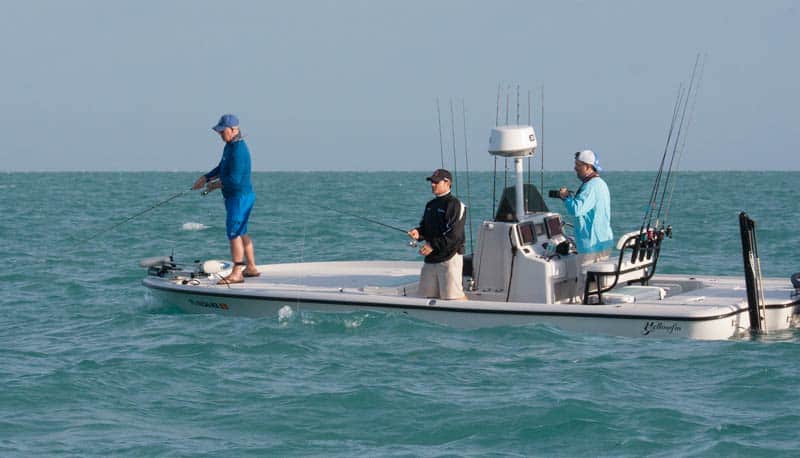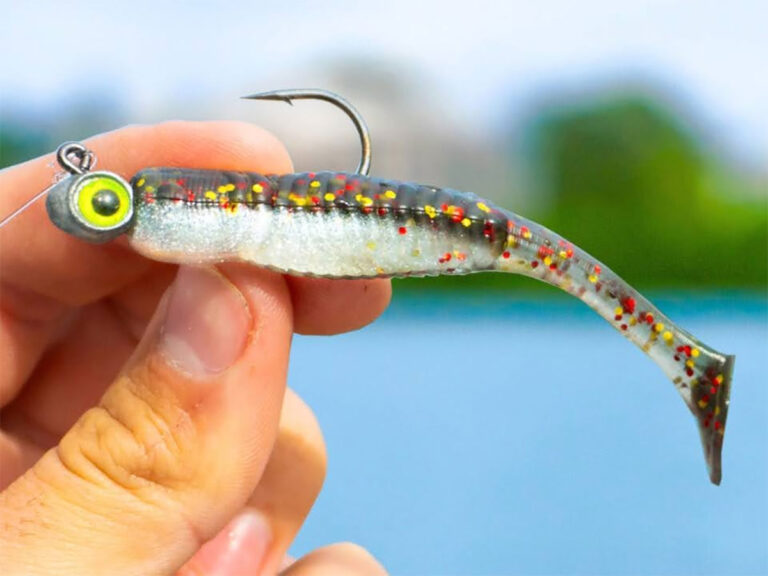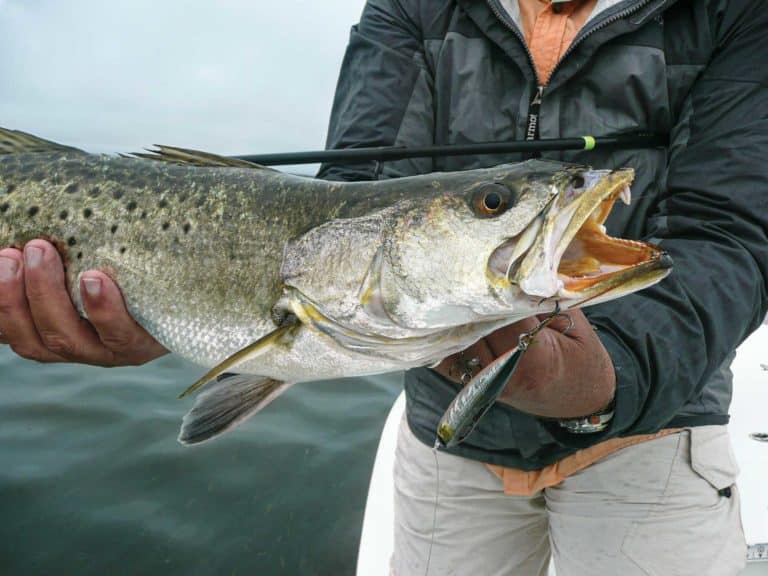
small boat radar
Anyone who has fitted out a boat for fishing knows well the timeworn adage about compromise. But more and more, the margin of compromise seems to be shrinking, and perhaps in no instance quite so dramatically as the sophisticated gear that can be slipped aboard the very smallest fishing boats. Of course, there is a case in point lurking here, and this time around, it’s radar.
Once a commercial and big-boat installation, radar has just about become a standard utility on everything from the big sport-fishermen on down to flats skiffs. A couple of characteristics make this possible. First is the small size of the radomes that can be shoehorned onto the tiniest arch or T-top, and second is the technologically advanced low-output radar, termed Broadband by manufacturer Navico, which sells it under both the Simrad and Lowrance brands.
The low power output of the Navico Broadband 4G radar eliminates the problem of needing to mount the radome in such way that people in the boat are not in the path of outgoing radiation. It simply puts out too little radiation to be a concern. As a result, mounting options are much more numerous, and competitive anglers especially have been quick to exploit that, reaping some immediate benefits.
Rich Tudor and partner Tom Rowland, who host and produce the Saltwater Experience, live and die in putting their TV show together by their ability to maximize their time on the water. Tudor, based in Islamorada, Florida, says they now rely on the power of a radar on their 24-foot Yellowfin bay boats.
“We don’t have a lot of fog here, like they do in other places, so that’s not a reason we installed the Lowrance Broadband radar,” says Tudor. “But we do leave the dock early in the morning, in the dark. When we are tarpon fishing, this is a constant, and there are other boats out there and other things that are not lit. It is a big advantage to see those things on the radar overlay right on our plotter screen.”
In the same arena of hazard avoidance, weather is a consideration. Fog may be moot, but thunderstorms in Tudor’s home waters in the Florida Keys spring up suddenly and violently, though they’re sometimes short-lived: The challenge is determining how big they are and where they are headed. “In the Florida Bay backcountry and the Marquesas, when we are out of cell-phone range, we can’t get the weather information we usually rely on,” says Tudor. “And even then, the weather updates are not immediate like they are with radar.”
The storms of concern, explains Tudor, are often not that big, usually only 2 by 5 miles, but they brew quickly. “It’s like a chess game,” he says. “We have to decide whether running through the storm is the easiest path to safety, or are we going to have to run around it. It is a gamble, and the kind of decision we have to make on a daily basis. With the radar, we can make an educated decision.” And along with that informed decision come comfort, safety and another way to maximize fishing time.
Simrad’s Broadband 4G radar ($1,899) has an 18-inch radome that weighs just over 16 pounds. As well as extremely low power output, it features advanced signal processing that provides highly accurate returns from right at boat-side out to 36 nautical miles, with dual-range capability from the 48 rpm scanner.
Another small-boat approach is to use a traditional radome in a 12-inch configuration. It must be installed high enough so that radiation output is above the passengers’ heads. An arch over a center console will raise the antenna for safe clearance, and so will the traditional solution, installation on a T-top.
The MDS-1 compact radome from Si-Tex ($1,299), a 12.4-inch radome weighing 9.9 pounds, is sized to go anywhere. With a range of one-eighth to 24 nautical miles, it displays a raw radar image or overlays on C-Map MAX or NT+ charts, for a complete overview of vessel traffic, weather and fixed-target data. Target intensity is shown in color shades to assist the operator in differentiating between large and small vessels and weather severities.
Humminbird’s 12-inch 2 kw AS-12RD2KW ($1,499.99) radome works with the five-port Humminbird Ethernet Switch, enabling plug-and-play configuration simple enough that the do-it-yourselfer should be able to install this radar in a couple of hours. The radar and Ethernet Switch system are compatible with all current Humminbird 800, 900 and 1100 models. Some models will require a free downloadable
software upgrade.









